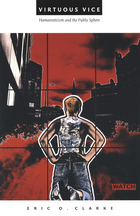418 books about Public opinion and 5
start with V
418 books about Public opinion and 5
418 books about Public opinion
5 start with V start with V
5 start with V start with V

Vaccine Rhetorics
Heidi Yoston Lawrence
The Ohio State University Press, 2020
Finalist, 2021 Association for the Rhetoric of Science, Technology, and Medicine Book Award
Honorable Mention, Conference on College Composition and Communication Best Book in Technical or Scientific Communication
Debates over vaccination run rampant in the US—from the pages of medical journals, to news coverage about the latest outbreak, to vehement messages passed back and forth online. From the professional level to the personal one, almost everyone has an opinion on vaccinations—and often conversations around this issue pit supporters of vaccinations against “anti-vaxxers.” In Vaccine Rhetorics, Heidi Yoston Lawrence turns a critical eye toward such conversations—proposing a new approach that moves us beyond divisive rhetoric and seeks to better understand the material conditions underlying the debate.
Starting with a key question—If vaccines work, why are they controversial?—and using an approach she calls “material exigence,” Lawrence seeks to understand the material conditions of disease and injury associated with vaccination. Examining four primary motivations—the exigency of disease at the heart of physician views, the desire for eradication from policymakers, concern over injury expressed by parents and patients in online confessionals, and questions about the unknown surrounding potential recipients of the flu vaccine, Lawrence demonstrates the complexity of vaccination skepticism and the need for more nuanced public discourse. In bringing together the voices of those who oppose, question, and support vaccines, Vaccine Rhetorics unearths the material circumstances that lead to differing viewpoints and brings important attention not just to what is said but how and why it is said—providing a useful framework for studying other controversial issues.
Honorable Mention, Conference on College Composition and Communication Best Book in Technical or Scientific Communication
Debates over vaccination run rampant in the US—from the pages of medical journals, to news coverage about the latest outbreak, to vehement messages passed back and forth online. From the professional level to the personal one, almost everyone has an opinion on vaccinations—and often conversations around this issue pit supporters of vaccinations against “anti-vaxxers.” In Vaccine Rhetorics, Heidi Yoston Lawrence turns a critical eye toward such conversations—proposing a new approach that moves us beyond divisive rhetoric and seeks to better understand the material conditions underlying the debate.
Starting with a key question—If vaccines work, why are they controversial?—and using an approach she calls “material exigence,” Lawrence seeks to understand the material conditions of disease and injury associated with vaccination. Examining four primary motivations—the exigency of disease at the heart of physician views, the desire for eradication from policymakers, concern over injury expressed by parents and patients in online confessionals, and questions about the unknown surrounding potential recipients of the flu vaccine, Lawrence demonstrates the complexity of vaccination skepticism and the need for more nuanced public discourse. In bringing together the voices of those who oppose, question, and support vaccines, Vaccine Rhetorics unearths the material circumstances that lead to differing viewpoints and brings important attention not just to what is said but how and why it is said—providing a useful framework for studying other controversial issues.
[more]

Victims or Villains
Jewish Images in Classic English Detective Fiction
Malcolm J. Turnbull
University of Wisconsin Press, 1998
Portrayed as dubious moneylenders, underworld operatives, megalomaniacs, Bolshevik saboteurs, or unscrupulous war-profiteers, Jewish characters have surfaced in English detective fiction from the very beginning. Starting with Conan Doyle, and focusing on the Golden Age of the genre, Tunrbull uses multiple examples to trace the evolution of Jewish caricature in British crime writing, and examines fictional representations of Jews in relation to burgeoning antisemitic sentiment within British society. Attention is paid to crime writers as wide-ranging as Baroness Orczy, Sydney Horler, R. Austin Freeman, Ngaio Marsh, and S. T. Haymon, and the depiction of Jews by Golden Age giants Dorothy L. Sayers, Agatha Christie, and Anthony Berkeley Cox.
[more]

Viral Frictions
Global Health and the Persistence of HIV Stigma in Kenya
Elizabeth J. Pfeiffer
Rutgers University Press, 2022
Viral Frictions takes the reader along a trail of intersecting narratives to uncover how and why it is that HIV-related stigma persists in the age of treatment. Pfeiffer convincingly argues that stigma is a socially constructed process co-produced at the nexus of local, national, and global relationships and storytelling about and practices associated with HIV. Based on a decade of fieldwork in one highway trading center in Kenya, Viral Frictions offers compelling stories of stigma and discrimination as a lens for understanding broader social processes, the complexities of globalization and health, and their profound impact on the everyday social lives and relationships of people living through the ongoing HIV epidemic in sub-Saharan Africa. This highly engaging book is ideal reading for those interested in teaching and learning about intersectionality, as Pfeiffer meticulously demonstrates how HIV stigma interacts with issues of treatment, race, ethnicity, class, gender, sexuality, social change, and international aid systems.
[more]

Virginia Woolf Icon
Brenda R. Silver
University of Chicago Press, 1999
This is a book about "Virginia Woolf": the face that sells more postcards than any other at Britain's National Portrait Gallery, the name that Edward Albee's play linked with fear, the cultural icon so rich in meanings that it has been used to market everything from the New York Review of Books to Bass Ale. Brenda Silver analyzes Virginia Woolf's surprising visibility in both high and popular culture, showing how her image and authority have been claimed or challenged in debates about art, politics, anger, sexuality, gender, class, the canon, feminism, race, and fashion.
From Virginia Woolf's 1937 appearance on the cover of Time magazine to her current roles in theater, film, and television, Silver traces the often contradictory representations and the responses they provoke, highlighting the recurring motifs that associate Virginia Woolf with fear. By looking more closely at who is afraid and the contexts in which she is perceived to be frightening, Silver illustrates how Virginia Woolf has become the site of conflicts about cultural boundaries and legitimacy that continue to rage today.
From Virginia Woolf's 1937 appearance on the cover of Time magazine to her current roles in theater, film, and television, Silver traces the often contradictory representations and the responses they provoke, highlighting the recurring motifs that associate Virginia Woolf with fear. By looking more closely at who is afraid and the contexts in which she is perceived to be frightening, Silver illustrates how Virginia Woolf has become the site of conflicts about cultural boundaries and legitimacy that continue to rage today.
[more]

Virtuous Vice
Homoeroticism and the Public Sphere
Eric O. Clarke
Duke University Press, 2000
In this daring study of queer life and the public sphere, Eric O. Clarke examines the effects of inclusion within public culture. Departing from studies that emphasize homophobia and its mechanisms of exclusion, Virtuous Vice details how mainstream efforts to represent queers affirmatively continually fall short of full democratic enfranchisement. Clarke draws on contemporary writings along with late-eighteenth- and nineteenth-century English and European cultural history to investigate how concepts of value, representation, and homoeroticism have interacted and circulated in the West since the Enlightenment.
Examining the role of eroticism in citizenship and why only normalizing
constructions of homosexuality enable inclusion, Clarke reconsiders the work of Habermas and Foucault in relation to contemporary visibility politics, Kant’s moral and political theory, Marx’s analysis of value, and the sexualized dynamics of the Victorian cultural public sphere. The juxtaposition of Habermas with Foucault reveals the surprising value of reading the former in the context of queer politics and the usefulness of the theory of the public sphere for understanding contemporary identity politics and the visibility politics of the 1990s. Examining how a host of nonsexual factors impinge historically upon the constitution of sexual identities and practices, Clarke negotiates the relation between questions of publicity and categories of value. Discussions of television sitcoms (such as Ellen), marketing techniques, authenticity, and literary culture add to this daring analysis of visibility politics.
As a critique of the claim that equal representation of gays and lesbians necessarily constitutes progress, this significant intervention into social theory will find enthusiastic readers in the fields of Victorian, cultural, literary, and gay and lesbian studies, as well as other fields engaged with categories of identity.
Examining the role of eroticism in citizenship and why only normalizing
constructions of homosexuality enable inclusion, Clarke reconsiders the work of Habermas and Foucault in relation to contemporary visibility politics, Kant’s moral and political theory, Marx’s analysis of value, and the sexualized dynamics of the Victorian cultural public sphere. The juxtaposition of Habermas with Foucault reveals the surprising value of reading the former in the context of queer politics and the usefulness of the theory of the public sphere for understanding contemporary identity politics and the visibility politics of the 1990s. Examining how a host of nonsexual factors impinge historically upon the constitution of sexual identities and practices, Clarke negotiates the relation between questions of publicity and categories of value. Discussions of television sitcoms (such as Ellen), marketing techniques, authenticity, and literary culture add to this daring analysis of visibility politics.
As a critique of the claim that equal representation of gays and lesbians necessarily constitutes progress, this significant intervention into social theory will find enthusiastic readers in the fields of Victorian, cultural, literary, and gay and lesbian studies, as well as other fields engaged with categories of identity.
[more]
READERS
Browse our collection.
PUBLISHERS
See BiblioVault's publisher services.
STUDENT SERVICES
Files for college accessibility offices.
UChicago Accessibility Resources
home | accessibility | search | about | contact us
BiblioVault ® 2001 - 2024
The University of Chicago Press









